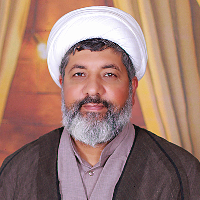A Pattern for the Media’s Moral Principles in Spreading Religion
Human lives are nowadays controlled by the media. The media mechanism for advertising has been so complicated because of designing many devices for convincing people. The media sometimes uses techniques which are morally wrong and religiously unjustified. Therefore, it is necessary to distinguish influential moral methods from immoral techniques and to provide a pattern for drawing this distinction. The present paper tries to provide a model for the moral principles in spreading religion. The pattern is in line with the three pillars of preaching religion and it separates the moral methods from the immoral ones. This pattern is based on six moral rules that should be observed in this regard: the ethical laws of benevolence and honesty pertain to the messenger, the laws of clarity and soundness are related to the message, and the laws of human dignity and the understanding level of the audience are connected to the message receiver.
-
The Semantics of Pain in the Holy Quran: A Thematic Analysis with an Ethical Approach
*, Hatam Mahdavinoor, Soghra Radan, Mohammad Mirzaei
The Qur’an and Science, -
Drivers of political ethics in the formation of modern Islamic civilization with emphasis on the views of Ayatollah Khamenei
Mahmoud Ramezani, *
Journal of Political studies of the new Islamic civilization, -
The drivers of the transition from the stages of modern Islamic civilization and achieving the desired Islamic society in the intellectual system of the Supreme Leader
*, Amir Siahpoosh
Jostarha - ye Siyasi - ye Mo'aser, -
The process of transition to the desirable future of the Islamic Revolution based on the thought of the supreme leader of the revolution
*, Dawood Faiz Afra
Journal of Political studies of the new Islamic civilization,




